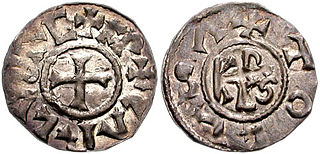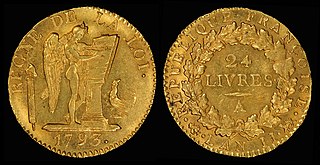The penning or penny was the Swedish variant of the Norwegian penning that was minted from about 1150 until 1548, and which remained as a unit of account in Sweden until 1777. Originally penning was first minted in Norway by the Norwegian king Olaf Tryggvason from the year 995, and was later adapted in both Sweden and Denmark as a coin system.
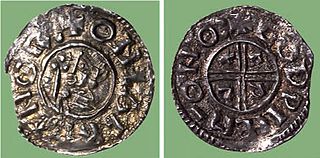
The penning was the dominant currency of the Norwegian coin system in the period 995-1387.

Norway, officially the Kingdom of Norway, is a Nordic country in Northern Europe whose territory comprises the western and northernmost portion of the Scandinavian Peninsula; the remote island of Jan Mayen and the archipelago of Svalbard are also part of the Kingdom of Norway. The Antarctic Peter I Island and the sub-Antarctic Bouvet Island are dependent territories and thus not considered part of the kingdom. Norway also lays claim to a section of Antarctica known as Queen Maud Land.

Olaf Trygvasson was King of Norway from 995 to 1000. He was the son of Tryggvi Olafsson, king of Viken, and, according to later sagas, the great-grandson of Harald Fairhair, first King of Norway.
The penning was minted in imitation of the pennies, pfennig and deniers issued elsewhere in Europe. However, although based on these coins, the accounting system was distinct, with different systems operating in different regions. All used the öre (derived from the Latin aureus ) which was worth 1/8 of a mark or 3 örtugar. However in Svealand, one öre was worth 24 penningar, but in Götaland it was worth 48 penningar and 36 in roughly the Diocese of Linköping and on Gotland. Around 1300, by royal command, the Svealand standard became the national standard, except on Gotland. The örtug was first minted around 1370 and the öre was issued as a coin from 1522. In 1524, however, the real örtug was replaced in minted form with a new one, also known as halvöre (half öre), which had a little higher value (whereas one mark was divided into 24 örtugar, it was divided into 16 halvöre), but the old örtug remained as a counting unit until 1777.

A penny is a coin or a unit of currency in various countries. Borrowed from the Carolingian denarius, it is usually the smallest denomination within a currency system. Presently, it is the formal name of the British penny (abbr. p) and the informal name of the American one cent coin (abbr. ¢) as well as the informal Irish designation of the 1 cent euro coin (abbr. c). It is the informal name of the cent unit of account in Canada, although one cent coins are no longer minted there. The name is also used in reference to various historical currencies also derived from the Carolingian system, such as the French denier and the German pfennig. It may also be informally used to refer to any similar smallest-denomination coin, such as the euro cent or Chinese fen.
The pfennig or penny is a former German coin or note, which was official currency from the 9th century until the introduction of the euro in 2002. While a valuable coin during the Middle Ages, it lost its value through the years and was the minor coin of the Mark currencies in the German Reich, West and East Germany, and the reunified Germany until the introduction of the euro. Pfennig was also the name of the subunit of the Danzig mark (1922–1923) and the Danzig gulden (1923–1939) in the Free City of Danzig.
Öre is the centesimal subdivision of the Swedish krona. In the Swedish language, the plural of öre in indefinite form is either öre or ören, whereas the singular definite form is öret and the plural definite is örena.
The conversion between the different units of currency in use at that time can be summarized as:
| Denomination | Mark | Öre | Örtug | Penning |
|---|---|---|---|---|
| Daler | 4 | 32 | 96 | 768 |
| Mark | 8 | 24 | 192 | |
| Öre | 3 | 24 | ||
| Örtug | 8 |
In 1604, the daler was renamed the riksdaler. There followed a period of very complicated currency, during which both copper and silver versions of the different denominations circulated and the riksdaler rose in value relative to the other units. In 1777, the riksdaler became the basis of a new currency system and the penning ceased to exist.
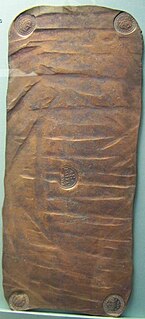
The riksdaler was the name of a Swedish coin first minted in 1604. Between 1777 and 1873, it was the currency of Sweden. The daler, like the dollar, was named after the German Thaler. The similarly named Reichsthaler, rijksdaalder, and rigsdaler were used in Germany and Austria-Hungary, the Netherlands, and Denmark-Norway, respectively. Riksdaler is still used as a colloquial term for Sweden's modern-day currency.
The name lives on in the Norwegian language and Swedish language in the contracted form of the plural, pengar/penger, which means money.
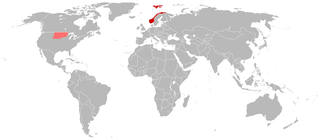
Norwegian is a North Germanic language spoken mainly in Norway, where it is the official language. Along with Swedish and Danish, Norwegian forms a dialect continuum of more or less mutually intelligible local and regional varieties; some Norwegian and Swedish dialects, in particular, are very close. These Scandinavian languages, together with Faroese and Icelandic as well as some extinct languages, constitute the North Germanic languages. Faroese and Icelandic are not mutually intelligible with Norwegian in their spoken form because continental Scandinavian has diverged from them. While the two Germanic languages with the greatest numbers of speakers, English and German, have close similarities with Norwegian, neither is mutually intelligible with it. Norwegian is a descendant of Old Norse, the common language of the Germanic peoples living in Scandinavia during the Viking Era.
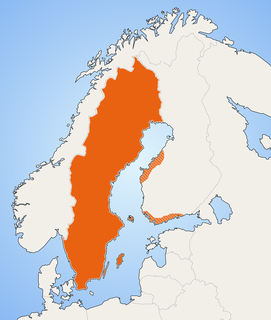
Swedish is a North Germanic language spoken natively by 10 million people, predominantly in Sweden, and in parts of Finland, where it has equal legal standing with Finnish. It is largely mutually intelligible with Norwegian and to some extent with Danish, although the degree of mutual intelligibility is largely dependent on the dialect and accent of the speaker. Written Norwegian and Danish are usually more easily understood by Swedish speakers than the spoken languages, due to the differences in tone, accent and intonation. Swedish is a descendant of Old Norse, the common language of the Germanic peoples living in Scandinavia during the Viking Era. It has the most speakers of the North Germanic languages. While being strongly related to its southern neighbour language German in vocabulary; the word order, grammatic system and pronunciation are vastly different.
